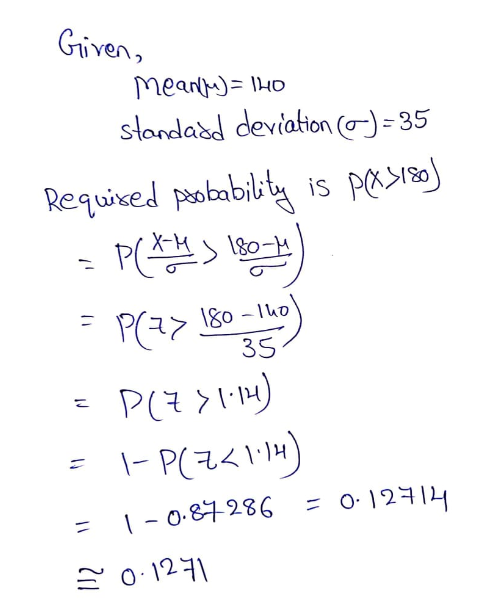S.M.A.R.T. test scores are standardized to produce a normal distribution with a mean of 140 and a standard deviation of 35. Find the proportion of the population in each of the following S.M.A.R.T. categories. Genius: Score of greater than 180 Superior intelligence: Score between 133 and 161. Average intelligence: Score between 110 and 120
Inverse Normal Distribution
The method used for finding the corresponding z-critical value in a normal distribution using the known probability is said to be an inverse normal distribution. The inverse normal distribution is a continuous probability distribution with a family of two parameters.
Mean, Median, Mode
It is a descriptive summary of a data set. It can be defined by using some of the measures. The central tendencies do not provide information regarding individual data from the dataset. However, they give a summary of the data set. The central tendency or measure of central tendency is a central or typical value for a probability distribution.
Z-Scores
A z-score is a unit of measurement used in statistics to describe the position of a raw score in terms of its distance from the mean, measured with reference to standard deviation from the mean. Z-scores are useful in statistics because they allow comparison between two scores that belong to different normal distributions.
S.M.A.R.T. test scores are standardized to produce a
Genius: Score of greater than 180
Superior intelligence: Score between 133 and 161.
Average intelligence: Score between 110 and 120.



Step by step
Solved in 3 steps with 5 images









